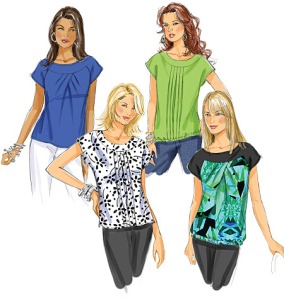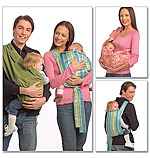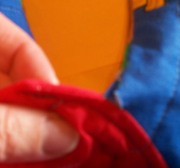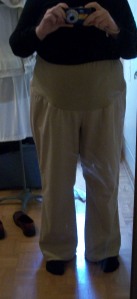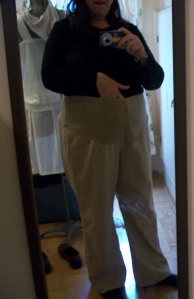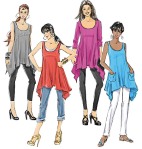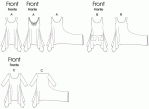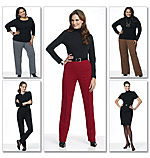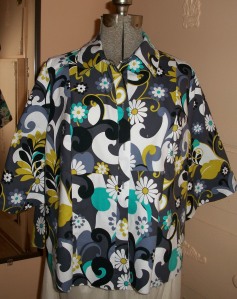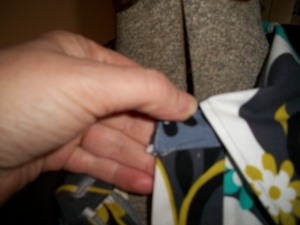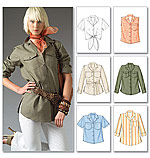I bought this pattern a year or two ago because I like the yoke that stretches into a cap sleeve on Option A. Using two remnants I cut a wearable muslin this summer and it has sat in my sewing drawer until now, five days before Christmas.
http://butterick.mccall.com/b5610-products-13751.php?page_id=875&search_control=display&list=search
Pros:
- Solids, prints and colorblocking are all treatments that this design serves equally well.
Cons:
- I couldn’t get the overlapping pleat detail right.
- Other reviewers have commented that the neckline is a boatneck and may not cover your bra strap, but I did not get that far in construction.
Some Assembly Required:
The pattern instructions do not offer the flat assembly method which you can do with this top despite the yoke extending into the sleeve cap.
My Problem with the Pleats
 I sewed the pleats down per the pattern instructions, three on one side and two on the other. Then when I went to sew the middle pleat I did it as I thought it was marked on the pattern. But the effect didn’t look right when I sewed on the yoke. There was no overlap. So I seam ripped and tackled the pleat again. I looked again at the pattern instructions and the pattern markings and tinkered with pins. An overlap was finally created but I was disappointed in that it was not the strong detail as drawn on the pattern envelope. It really was unremarkable. Additionally the bodice was now too small to fit the yoke.
I sewed the pleats down per the pattern instructions, three on one side and two on the other. Then when I went to sew the middle pleat I did it as I thought it was marked on the pattern. But the effect didn’t look right when I sewed on the yoke. There was no overlap. So I seam ripped and tackled the pleat again. I looked again at the pattern instructions and the pattern markings and tinkered with pins. An overlap was finally created but I was disappointed in that it was not the strong detail as drawn on the pattern envelope. It really was unremarkable. Additionally the bodice was now too small to fit the yoke.
Fabric:
I used two remnants from other sewing projects.
Finetuning:
I felt like this was one time the pattern companies could have broken down a bit and told you what it would be like to sew this top, such as “here the third pleat crosses the …” Also the markings on the tissue itself weren’t very clear. All of the pleats had the circles to match up and the arrows showing direction of pleat. But the crucial center pleat kind of went off into nowhere. The center front was marked with a four inch line, but was I to sew my pleat to it or was it just there for reference?
Will I Sew it Again:
Not as the pattern instructs. I nearly had it packed for a trip to the donate box at the thrift store but I looked again at the yoke/sleeve cap which had attracted me to the pattern in the first place. The yoke creates a strong horizontal line accentuating the shoulders and drawing attention towards the wearer’s face. I might take the bodice, draw out the pleats and use simple gathers to match it to the yoke.
I am too disgusted right now and have a lot of other sewing projects pending to play around with the above idea. This summer I might give it another chance.
Advice to Others:
I don’t have any except, if you take a chance on this pattern, make sure you purchased it at a deep discount sale.
Overall Style Grade: B, the pleat details are interesting but they have been around a few years. But even so, pleats are still current and the design could be very flattering, especially to pears and apples who need the shoulder detail.
Results Grade: F, for me since I did not complete it. Others who have completed this top successfully can be found on sewing.patternreview.com.
